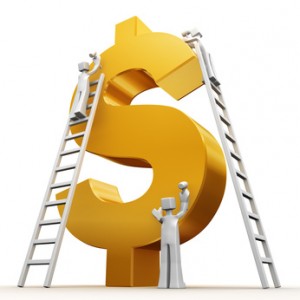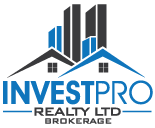
Dino Nicosia, Broker of Record, Investpro Realty and Appraisal Ltd., Brokerage
The real estate market is divided into many submarkets, such as commercial, industrial, vacant land and residential. The sub market for residential can be separated into two categories; the owner occupied and tenant occupied properties. The value of the owner occupied property is mostly determined by supply and demand. This demand is significantly influenced by disposable income, interest rates, consumer confidence and political and economical climate. Although the tenant occupied property value is influenced by the same factors, in addition it is affected more importantly by the income it generates. With this type of residential property you are not just buying the bricks and mortar, you are also buying the income that is being produced from the rent. Therefore a tenant occupied property is also classified as an investment property.
Since the value of an investment property is largely determined by the income it produces, we should relate this to running a business where the goal is to end up with money in our pocket at the end of the month. After collecting the rent and paying all the bills, the amount of money left over, (before making the mortgage payments), is called the Net Operating Income (NOI). To determine an accurate NOI, the expenses must include property taxes, insurance, maintenance, vacancy reserve, utilities, garbage removal, lawn service, plowing, wages and management fees if any.
The NOI is directly tied into the Capitalization Rate (also referred to as the Cap Rate). The Cap Rate essentially represents the percentage return on an all cash purchase (not taking mortgage debt into account). Simply refer to the Cap Rate as being the return on the investment, and note that the Cap Rate will be determined by the current market sales in the area of the subject property.
For example, let’s assume you purchased a 20 unit apartment building which generates an annual NOI of $100,000.00, and the purchase price of this property was $1,000,000.00. Therefore based on this purchase price, you are receiving a 10% return on the investment; or in other words, the Cap Rate on this purchase was 10%.
Combined with the Cap Rate, the NOI will be instrumental in establishing the investment property’s value. Therefore if you want to increase the value of your tenant occupied property, you must improve your NOI.
There are three major ways to increase the NOI:
1. Find ways to increase rents without affecting the vacancy.
2. Reduce property expenses without neglecting the property.
3. Do not rent the equipment…own them.
Increasing rents:
We will demonstrate the tremendous impact on value from rent increases, with this real life example. The ownership of a recently purchased 21 unit apartment building, created a business plan to renovate all units that became vacant and attempt to maximize their rents. They knew the great potential of increasing the NOI, which in turn would escalate the value of their property.
The plan was to renovate and increase each unit by an average of $100.00 per month ($1,200.00 per year). Assuming that the current market Cap Rate is 7%, the value of the property would escalate by $17,000.00 by just increasing rent on one unit ($1,200.00 divided by 7% cap rate). In the course of one year they were able to maximize rents to ten apartment units for a total annual increase to the NOI by $14,000.00. This amount translated to an increase in value by $200,000.00.
Before an investor undertakes this task, they should ask themselves;
Is it worthwhile to spend money for renovations if the rents can be increased as a result of the renovations? .
Do the increased rents justify the expense?
Will the increase in value as a result of the renovations justify the expense?
First let’s establish how long will it take to recoup the renovation costs? The answer comes down to doing the math.
In the above example the renovation cost was approximately $3,000.00 per unit. After the renovation was complete the rents were increased by an average of $100.00 per month or $1,200.00 annually. It will take 30 months to recoup the expense or in other words the payback on the investment is 2.5 years. That equates to an approximate 40% annual return on the renovation investment, ($1200/$3000 = 40%).
But most importantly the total value of the property based on a 7% cap rate had increased by $200,000.00. In this example, it’s clear that the renovations at a cost of $3,000.00 per unit ($30,000 for all 10 units) was a prudent investment
2. Reducing Expenses:
Reducing property expenses is often the most cost effective way to improve the NOI and increase value.
Utilities:
Assess how much you are paying for heat, water and hydro and then establish how you can reduce these charges.
Water: Conduct routine checks for water leaks and running toilets in each unit
Heat: Check for loss of heat from windows, dirty radiators, old boiler system
Hydro: If you are paying for the unit hydro, remember that old fridges consume more; charge extra for the use of A/C window units and check the timer to the common area and exterior lights. Educate your tenants on the benefits of energy conservation.
Realty Taxes:
Are you paying too much realty tax? Let’s face it, paying too much realty tax on investment properties could significantly impact the NOI and dramatically reduce value. Unfortunately most investors take this large expense for granted and assume that the assessment on their investment property is correct and never bother to investigate it.
The reality is that many landlords are paying too much realty tax without being aware of it. As an owner, you should make a point to investigate if you are paying too much realty tax on all your properties.
I would like to share another real life experience of how an owner reduced his property tax by over $10,000.00 per year.
In a transaction about 4 years ago, I noted that the property tax on my client’s new acquisition (a 20 unit apartment building in Hamilton On) appeared to be extremely high, based on my many comparables. Doing a quick check I calculated that the realty tax was about $12,000.00 too high. The first step was to ask MPAC to review the assessment through a simple on line application called Request for Reconsideration (RfR)”
Do your homework by obtaining the assessments on similar properties. If you are convinced your property is over assessed, then simply go to the MPAC website and follow the instructions; download, and fully complete the (RfR) form. A local assessment officer will be appointed to review your application. Once the officer completes his investigation you will be notified on their decision.
Should you not agree with the results from the reconsideration process, you still have the option for an appeal. The appeal process is more involved and will not be covered in this article.
In reference to the application for the Request for Reconsideration by my client I am pleased to say it was a huge success. The owner received a revised tax assessment and a refund cheque for over $11,000.00. It was not just the refund that was gratifying, the increase in the NOI as a result of the realty tax reduction translated to a huge rise in value. By taking the revised net income and using a market cap rate of 7%, this equated to about a $150,000.00 increase in value!
3. Rental Equipment:
Another relatively easy way to reduce your expenses and increase the NOI is to eliminate rental equipment. Make a plan to owning them instead.
We continue another real life example of how the property value was increased for a 21 unit apartment building. The hot water tank rental was approximately $300 per month (including taxes) which equated to $3,600 per year. The cost to purchase and install the equipment was approximately $4,000.00. The purchase of this hot water tank was a great investment simply because of the approximate one year payback! But more importantly, this change also increased the property value by simply reducing of the operating expenses (or increasing the NOI) by $3,600.00 per year.
How much would the property value increase after this relatively low investment? To assess the impact of the $3,600.00 of extra income that was generated by reducing the annual hot water rental expense, we need to divide this amount by the market Cap Rate. Let’s assume the current market Cap Rate is 7.0%, therefore by dividing by this Cap Rate the value had increased by $51,000.00, just by improving the NOI. ($3,600/7.0% = $51,000.00).
The above scenarios demonstrate how simple investment undertakings produced a tremendous return rate and helped generate a huge increase in property value. One can now clearly see that increasing rents and or lowering expenses, (even if it requires expenditure to do so), is a wise decision.
On the first real life scenario, the property was just sold for a $300,000.00 profit, after only one year of ownership.
Remember, it is all about the N.O.I.
